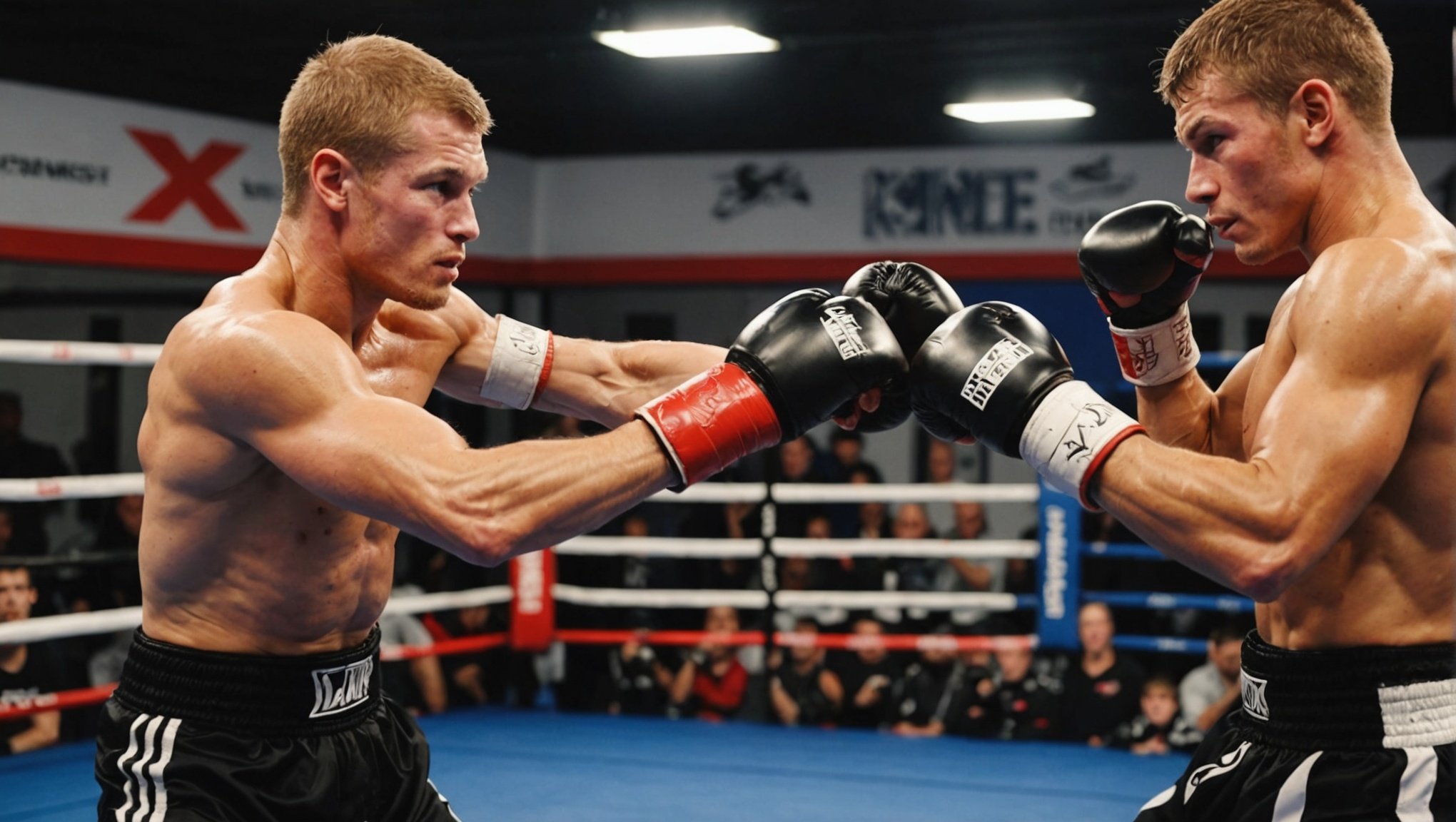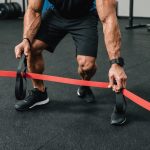Reaction speed is a key component in kickboxing, impacting everything from defense to striking ability. Enhancing this skill can greatly improve your performance in the ring. This guide offers practical tips tailored for UK kickboxers to sharpen reaction times, with exercises and techniques designed to fit your training regimen. Learn how to stay agile and responsive, giving you the edge over your opponents. Embrace these strategies to elevate your kickboxing game and achieve your performance goals.
Understanding Reaction Speed in Kickboxing
Reaction speed is a critical component of kickboxing performance, determining how quickly a fighter can respond to an opponent's moves. It involves the time taken for the brain to process a stimulus and initiate a physical response. In kickboxing, a swift reaction can mean the difference between landing a punch or dodging a kick.
Also to see : Unlocking Karate Excellence: Harnessing Video Analysis to Enhance Techniques in the UK
Several factors affect reaction speed, both physical and mental. Physically, muscle fiber composition plays a role; fast-twitch fibers contract quickly and are advantageous in rapid movements. Flexibility and agility also contribute, allowing for quicker, more efficient responses. Mentally, focus and concentration are key. A fighter's ability to maintain attention amidst the chaos of a match ensures they can react promptly to any threat.
The impact of reaction speed on kickboxing performance is profound. Quick reactions enable fighters to anticipate and counter their opponent's actions effectively. This agility not only enhances defensive strategies but also improves offensive tactics, allowing for precise strikes.
Have you seen this : Unlocking the Advantages of Cross-Training in Various Martial Arts for UK Athletes: Elevate Your Performance!
In conclusion, honing reaction speed through athletic training can significantly elevate a kickboxer's performance, providing a competitive edge in the ring.
Essential Drills to Enhance Reaction Speed
Improving reaction speed in kickboxing requires targeted drills that hone both reflexes and agility. These reaction drills are integral to kickboxing training, offering fighters the ability to respond swiftly and effectively to their opponents.
One effective method is the use of speed exercises such as ladder drills. These enhance footwork and coordination, crucial for quick directional changes. Incorporating partner drills is another powerful approach. They simulate real-time combat scenarios, allowing fighters to practice responses to unpredictable attacks. This not only improves reaction time but also builds strategic thinking under pressure.
Equipment-based training can also significantly boost reaction speed. Reaction balls, for instance, are small, unevenly shaped balls that bounce unpredictably. They train fighters to anticipate and react to sudden movements. Similarly, speed bags are excellent tools for honing hand-eye coordination and timing. Consistent use of these tools can lead to notable improvements in a fighter's ability to anticipate and counter opponent moves.
By integrating these drills into regular kickboxing training, fighters can enhance their reaction speed, providing a competitive edge in the ring. This comprehensive approach ensures that both physical reflexes and mental acuity are sharpened.
Nutrition Tips for Optimal Performance
For kickboxers, a well-balanced kickboxing diet is crucial to maintaining energy and enhancing performance. Nutrition for athletes plays a pivotal role in supporting muscle function and improving reaction time.
Key Nutrients for Kickboxers
- Proteins: Essential for muscle repair and growth. Lean meats, eggs, and legumes are excellent sources.
- Carbohydrates: Provide the primary energy source. Whole grains, fruits, and vegetables should be staples.
- Healthy Fats: Support sustained energy and brain function. Avocados, nuts, and olive oil are beneficial.
Recommended Foods
Including performance-enhancing foods in a kickboxer's diet can boost energy and focus. Bananas and oats offer quick energy, while salmon and spinach support muscle recovery and mental clarity.
Hydration Strategies
Proper hydration is vital for maintaining peak performance levels. Kickboxers should consume water consistently throughout the day and consider electrolyte-rich drinks during intense training sessions. Dehydration can impair both physical and cognitive function, reducing reaction time and overall effectiveness in the ring. By prioritizing these nutritional strategies, kickboxers can ensure they are physically and mentally prepared for competition.
Mental Techniques to Boost Reaction Speed
In the fast-paced world of kickboxing, mental training is as crucial as physical preparation. Enhancing cognitive performance can significantly improve a fighter's reaction speed, giving them an edge in the ring.
Importance of Mental Agility
Mental agility allows fighters to process information quickly and make split-second decisions. It is not just about physical reflexes but also involves mental sharpness. This agility ensures that fighters can anticipate their opponent's moves and react accordingly.
Focus Techniques
Visualization is a powerful tool for improving focus. By mentally rehearsing fights, kickboxers can prepare for various scenarios, enhancing their ability to react swiftly. Mindfulness practices, such as meditation, help maintain concentration and awareness during bouts. These techniques enable fighters to remain present, reducing distractions and improving focus.
Reducing Anxiety
Managing anxiety is vital for maintaining calmness during fights. Techniques like deep breathing and positive self-talk can help control nerves, allowing fighters to stay composed under pressure. This calmness enhances decision-making and reaction speed, crucial for success in the ring. By integrating these mental strategies, kickboxers can boost their performance, ensuring they are mentally prepared for any challenge.
Adapting Techniques to the UK Kickboxing Environment
Training in UK kickboxing offers unique opportunities and challenges. Facilities across the country vary, with many providing specialized equipment and expert coaching to enhance skills. Commonly, gyms offer a range of classes tailored to different skill levels, from beginners to advanced fighters. These facilities often include state-of-the-art equipment and access to experienced trainers who understand the nuances of the sport.
Insights from Local Experts
Adapting training to UK conditions involves considering the climate and available resources. Local experts suggest incorporating indoor training sessions during colder months to maintain consistency. They also recommend focusing on agility and endurance, given the often unpredictable weather. Emphasizing flexibility and adaptability in training routines can help fighters stay prepared for various conditions.
Community Resources
The UK boasts a vibrant kickboxing community, with numerous clubs and workshops available. These community resources provide invaluable support, offering fighters the chance to learn from peers and experienced practitioners. Workshops often focus on specific techniques, allowing participants to refine their skills in a supportive environment. Engaging with these resources can enhance a fighter's experience, providing both practical skills and a sense of camaraderie.
Importance of Footwork in Reaction Speed
In kickboxing, footwork techniques are crucial for enhancing reaction speed. Effective footwork allows fighters to maintain balance, adjust positions swiftly, and respond to their opponent's actions with agility. This agility is essential, as it enables kickboxers to evade punches and deliver counterattacks efficiently.
Enhancing Kickboxing Agility
Incorporating kickboxing agility drills into training routines can significantly improve a fighter's movement. These drills often involve lateral movements, quick pivots, and directional changes, all of which are key for maintaining an advantageous position in the ring. By mastering these movements, fighters can anticipate their opponent's actions and react faster.
Movement Training Drills
Movement training that combines footwork with reaction exercises is highly beneficial. Drills such as shadowboxing with a focus on foot placement or using agility ladders to practice rapid foot movements can enhance both speed and precision. These exercises help fighters develop the muscle memory needed for quick, instinctive reactions during a match.
Tips for Improvement
To refine footwork specifically for kickboxing, fighters should focus on maintaining a low centre of gravity, keeping their weight balanced, and practising with varied speeds. Integrating these elements into training can lead to improved reaction speed and overall performance in the ring.
Technology and Tools to Enhance Training
Incorporating training technology into kickboxing can significantly improve a fighter's performance. Modern tools offer detailed insights into reaction speed and overall agility, making them invaluable for athletes aiming to enhance their skills.
Recommended Apps and Gadgets
Several kickboxing apps are designed to track and improve reaction speed. These apps often include features like virtual sparring sessions and real-time feedback on movements. Gadgets such as smart gloves and wearable sensors provide data on punch speed and accuracy, allowing fighters to monitor progress closely.
Integrating Technology into Training
To effectively use these technologies, fighters should incorporate them into their daily routines. Start by using performance tracking apps to set baseline metrics, then regularly review progress. Smart equipment can be worn during both practice sessions and real fights to gather comprehensive data. This continuous feedback loop helps fighters identify areas for improvement and adjust their training accordingly.
By leveraging these tools, kickboxers can gain a competitive edge, ensuring their training is both efficient and effective. Embracing technology in training not only enhances physical capabilities but also sharpens mental agility, crucial for success in the ring.
Success Stories from UK Kickboxers
The journey to kickboxing success often involves overcoming challenges and refining techniques. Several UK kickboxers have shared their inspiring stories, highlighting the impact of enhanced reaction speed on their performance.
Athlete Testimonials
Many athletes attribute their success to rigorous training regimens. For instance, Sarah, a national champion, emphasizes the importance of consistent drills. "Incorporating reaction balls and agility ladders has transformed my speed and precision," she notes. Her commitment to these tools has led to significant improvements in her ability to anticipate and counter her opponents' moves.
Performance Improvement Strategies
Successful athletes often follow tailored training plans. John, another accomplished fighter, shares his approach: "Focusing on mental agility through visualization and mindfulness has been a game-changer." This mental preparation complements physical training, allowing him to react swiftly and accurately in the ring.
Analysis of Training Regimens
Examining these athlete testimonials, a common theme emerges: the integration of both physical and mental exercises. By focusing on drills that enhance footwork and cognitive sharpness, these kickboxers have achieved measurable performance improvement. Their stories serve as a testament to the power of dedicated, strategic training in achieving kickboxing excellence.
Maintaining Long-Term Reaction Speed Gains
Achieving sustained performance in kickboxing requires a balanced approach that includes ongoing training and effective recovery strategies. While enhancing reaction speed is crucial, maintaining these gains is equally important. Proper rest and recovery are fundamental in preventing burnout and ensuring long-term success.
Importance of Recovery and Rest
Incorporating rest days into your routine allows muscles to repair and grow, which is essential for maintaining peak performance. Without adequate recovery, fighters risk injuries and diminished reaction speed. Techniques such as stretching, yoga, and adequate sleep can facilitate recovery, keeping fighters at their best.
Ongoing Training Strategies
Integrating reaction speed drills into regular training routines is vital for sustained performance. Consistency is key; short, frequent sessions are more effective than sporadic, intense workouts. This approach helps in building muscle memory and maintaining agility over time.
Setting Achievable Goals
To track progress, set realistic goals and adjust them as skills improve. Use performance metrics to monitor enhancements in reaction speed. Regular assessments help in identifying areas for improvement, ensuring that training remains effective and aligned with personal objectives. By focusing on these strategies, kickboxers can maintain their reaction speed gains and continue to excel in the ring.













